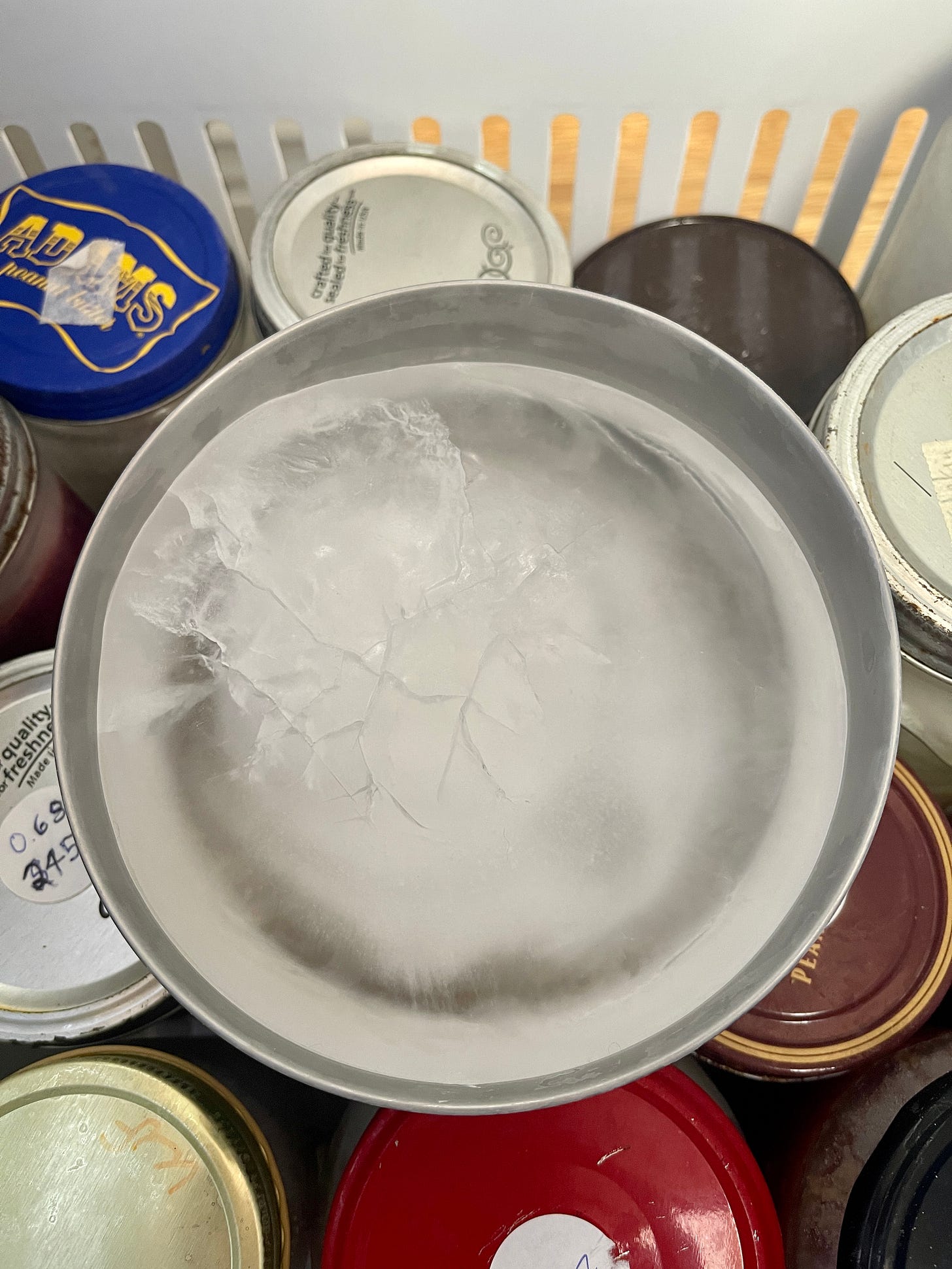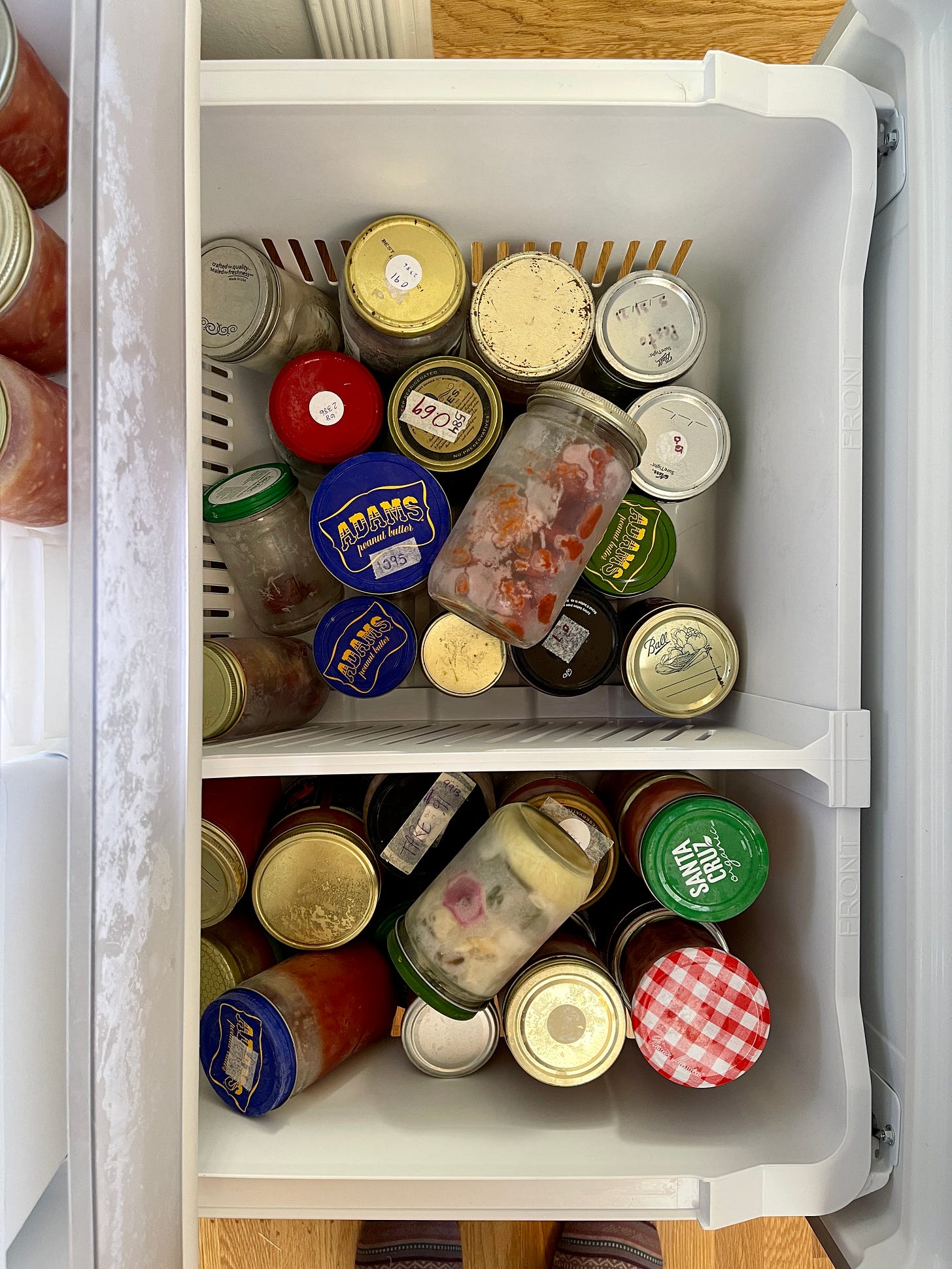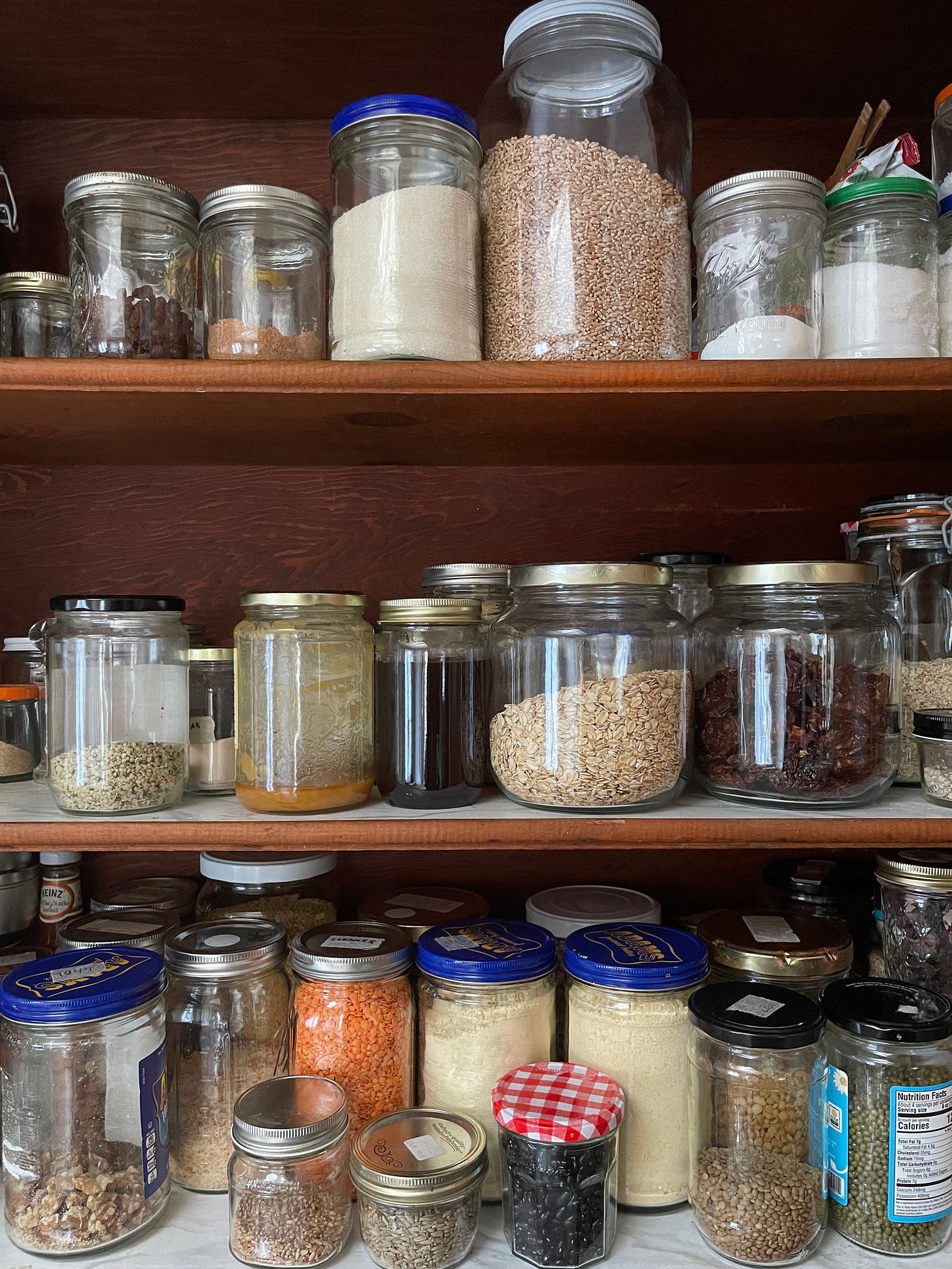How to Prevent Food from Spoiling During a Power Outage
Rivers in the sky return to California
An atmospheric river pummeled California this weekend, causing flooding and mudslides in the south and power outages here in the north that affected approximately 500,000 people. We were fortunate to lose power for only a little over an hour on Sunday.
Whether a storm knocks down power lines in the winter or the grid can’t sustain all those air conditioners running at once during a summer heat dome, the following tips will help you save more of your perishable food.
A note on food safety
If in doubt, compost it! You don’t want to get sick. Take simple precautions (like keeping food cold) and use both your senses and common sense when judging food’s edibility.
According to the USDA, during an outage, a full, closed freezer will remain cold for 48 hours, while a half-full freezer will stay cold half as long—24 hours—unless you constantly open the door. (Avoid that!)
With the door closed, the refrigerator will stay cool for four hours without power. If the outage lasts longer, your refrigerator has essentially become a gigantic cooler. And to keep food chilled and safe in a cooler, add ice.
Make ice
If the forecast calls for a bad storm, make large blocks of ice by filling stainless steel bowls or containers with water and putting them in the freezer while you have power. Should you need water later, you can thaw these. If you want to use your bowl after freezing the water, let it sit at room temperature for a few minutes. The ice will slightly thaw around the edges and you’ll be able to slip it out to put it back in the freezer.
A large block of ice will last much longer than a plastic bag of smaller ice cubes, requires zero packaging and costs essentially nothing. As soon as the lights came back on yesterday, I filled my first bowl with water. (I should have done this on Friday or Saturday!)
While you’re at it, fill some jugs with water
Or fill the bathtub. The water could shut off or become contaminated during a storm. You don’t want to run out of water.
If you have frozen soup or broth, move some to the refrigerator
I freeze lots of cooked food, such as soup, broth and tomatoes. These double as ice packs in the refrigerator and once they thaw, we eat the contents!
Know that some foods will keep without refrigeration
Not everything needs to chill.
Commercial jam keeps at room temperature for a year. Natural peanut butter keeps for at least a month. Eat your peanut butter and jam sandwiches confidently.
Do not store bread in the refrigerator, where it will dry out.
Unless fermented, ketchup will keep at room temperature for a month and mustard for two. The fermented versions in my cookbook should be refrigerated to slow down the fermentation. Otherwise they will continue to ferment quicker, the flavors will change and the ketchup will turn boozy (tomatoes are fruit). Go here for a list of more opened condiments that can be stored outside of the refrigerator.
Basil will be very happy on the counter in a jar of water as will many vegetables. If the power stays out for a couple of days, you don’t have ice, and your celery starts to look limp, put it in a jar of water. Ditto for carrots and asparagus.
Go here for more on storing produce A to Z.
Chill or freeze food at your workplace if possible
Take some perishable food to your workplace if it has power. My daughter MK did this last year when one of our atmospheric rivers knocked the power out for a couple of days. She also took our ice packs, froze them and brought them home after work.
Stock up on non-perishables
Whether a storm is headed your way or not, you won’t regret having a supply of non-perishable food on hand: nuts, seeds, dried beans, lentils, flour, rice, oats, dried fruit, sugar, tea and so on.
Play Chopped, home edition
Like a contestant on the cooking show Chopped, you now have a pile of random ingredients that you’ll want to prepare. If you know a storm is on its way, cook the most perishable food on hand now, along with some staples to assemble into meals should the power go out. (And if it stays on, you now have meals prepped and ready to eat.) Some ideas:
Make pesto with whatever greens. Spread that on sandwiches or a wraps.
Cook grains and beans to make grain bowls with whatever vegetables you have on hand. Make a vinaigrette to toss in just before eating. Or thin out that pesto to make dressing.
Caramelize a few onions, use some of the beans you cooked and shred a bit of cheese to wrap up in a flour tortilla spread with any random condiments in the refrigerator that would go well with it.
To use up any milk you have in the refrigerator, make overnight oats (no cooking required). Or, if you have advance warning, make paneer or ferment excess milk. Fermenting milk extends its shelf life.
Hard boil eggs for egg salad sandwiches.
If the power goes out without warning and you don’t have a heat source such as a camping stove, you won’t be able to cook these in advance and will have to get creative with what’s on hand. Again, start with the most perishable food first.
Compost what spoils
Because decomposing food in a landfill emits methane, a greenhouse gas much more potent than carbon dioxide, inedible food belongs in a compost bin of some sort. If you don’t have a backyard compost bin—or a backyard—you may be able to compost via one of the options you’ll find in composting 101.
Get into the habit of eating what’s on hand before buying more food
This is a good practice even if you your solar, backed up by a battery keeps the power on while the rest of the neighborhood goes dark. Eat what you’ve already spent time and money purchasing and you’ll waste less food. According to ReFED, every year, the average American family of four spends over $2,700 on food they don’t eat.
When the power comes back on, learn to preserve food
You’ll never regret learning how to preserve food and you’ll have fun doing it! Dehydrated fruit keeps for ages. Use a food dehydrator or the oven at a very low temperature. Or, in the summer, use a solar food dehydrator. Canned food will keep on the shelf for years.
Because many fermented foods do not require an energy source to prepare (many require refrigeration after active fermentation), a power outage may be the perfect time to try this method of food preservation. If you have cabbage in the refrigerator and no power, you could make your first batch of sauerkraut.
As the planet heats, these storms will continue to intensify. If this keeps you awake at night, find your people and join forces in a climate-focused group such as 350.org, Climate Reality Project, Indigenous Climate Action and so on (there are many).
Upcoming events
Feb 6th, 7pm: Los Altos Library, Fermentation Workshop. Register here.
Feb 10th, 9am PT/12pm ET: Start a Sourdough Starter—and Keep It Alive! Come celebrate my sourdough starter’s 10th birthday during this free online sourdough starter workshop. Register here.
Feb 15th, 7pm: Campbell Express Library, Induction Cooking Demo. Register here.
March 2nd, 11am: Gilroy Library, Fermentation Workshop. Register here.
March 7th: Mountain View Library, Homemade Pasta Cook-along. More information coming soon about this online event.
March 9th, 2pm: Morgan Hill Library, Induction Cooking Demo. Registration opens February 8th.
March 10th, 3pm: Cupertino Library, Induction Cooking Demo. Registration opens February 9th.
March 23rd, 2pm: Milpitas Library, Fermentation Workshop. Registration opens February 22nd.






Very practical and helpful suggestions. How about sharing them with our nation’s power companies who could send them out as a PSA, with credit to you of course?
What a thoughtful and well written article! Thank you for keeping us educated!